The April Full Moon greeted me on my drive to Pedernales Falls State Park this morning. Clear skies and moon lit nights are allowing many migrants safe passage north because few new migrants were detected at the park today. I did identify both a Painted Bunting and Indigo Bunting singing across the river at East Park Boundary and Tobacco Creek locations. The Indigo Bunting can readily be identified by its song which is comprised of paired phrases. Folks at the bird blind reported a Lazuli Bunting last Thursday.
A Broadwing Hawk was sited again this week and Louisiana Waterthrushes were present at four sites. Northern Parulas and Nashville Warblers were still abundant throughout the park as were Red-eyed, White-eyed and Yellow-throated Vireos, and Summer Tanagers. I just learned Parula's do nest in Texas so I am hoping some individuals may nest here. The White-eyed Vireo nest I found under construction two weeks ago now has a bird sitting tight.
I did see a River Otter for the first time on the Pedernales riding the rapids at East Park Boundary. It was a marvelous day to be out enjoying Texas natural lands.
Prothonotary Warbler Occurrence In Texas
Central Texas draws the western line for the Prothonotary Warbler range. This species occupies much of eastern North America up to the southern boarder of Ontario Canada.
Prothonotarys' nest in natural cavities but also readily use nest boxes located on or near water. Flooded swamps represent ideal habitat but they will also nest along rivers or small bodies of water.
In May 2007 I saw a brightly colored male Prothonotary Warbler at Pedernales Falls State Park bird blind. After some research I learned male birds have been seen building nests in neighboring counties to Blanco County. Further research revealed a pair of Prothonotary Warblers successfully nested at Heard Wildlife Sanctuary in McKinney, Texas.
In December 2007 I decided to undertake a nest box study at the park. January through February 2008 I hiked the entire Pedernales River and tributaries within park boundaries, in an effort to choose the best sites. Habitat selection proved a challenge do to high flood levels along the river.
Five sights were eventually selected where two nest boxes each were placed. Most boxes were attached to trees however two were attached to metal poles. These boxes were monitored from March through June 2008 on a weekly basis. A Breeding Bird Study was conducted at each nestbox location in 2008 and will be continued in 2009.
Prothonotarys' nest in natural cavities but also readily use nest boxes located on or near water. Flooded swamps represent ideal habitat but they will also nest along rivers or small bodies of water.
In May 2007 I saw a brightly colored male Prothonotary Warbler at Pedernales Falls State Park bird blind. After some research I learned male birds have been seen building nests in neighboring counties to Blanco County. Further research revealed a pair of Prothonotary Warblers successfully nested at Heard Wildlife Sanctuary in McKinney, Texas.
In December 2007 I decided to undertake a nest box study at the park. January through February 2008 I hiked the entire Pedernales River and tributaries within park boundaries, in an effort to choose the best sites. Habitat selection proved a challenge do to high flood levels along the river.
Five sights were eventually selected where two nest boxes each were placed. Most boxes were attached to trees however two were attached to metal poles. These boxes were monitored from March through June 2008 on a weekly basis. A Breeding Bird Study was conducted at each nestbox location in 2008 and will be continued in 2009.
Saturday, April 19, 2008
Subscribe to:
Post Comments (Atom)

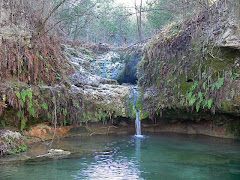
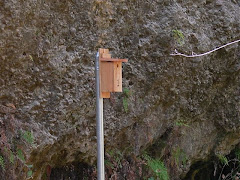
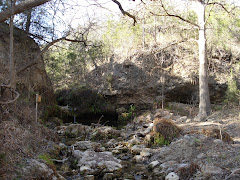
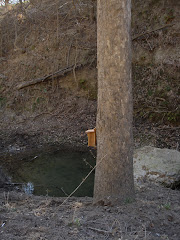
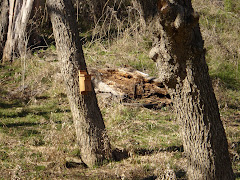




1 comment:
Wow, I bet that River Otter was an exciting sight!
Post a Comment